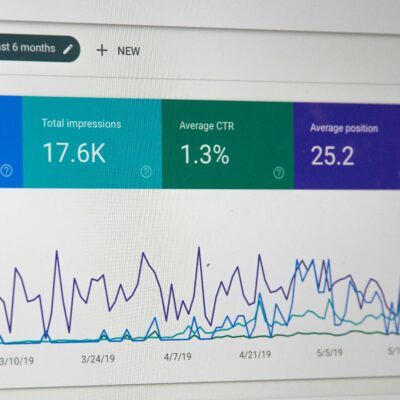
If just the thought of analytics makes you want to crawl under a technology rock, you’re not alone. But analytics are not something to be afraid of. In fact, they are something to embrace for business development and valuable insights into your business’ marketing performance and strategy.
Marketing and advertising in the absence of analytics is like driving a car with a blindfold on. How can you know what speed you’re going? How do you know when you’ll run out of petrol? If you can’t measure the success or failure of a marketing tactic, are you wasting your time and money? In short, yes.
There are a variety of third-party analytics tools available today that offer varying levels of service and insights at staggered costs. Let’s focus on the basic and free version of Google Analytics, which provides insights into your marketing efforts across ads, videos, websites and social tools accessed from anywhere in the world using desktops, laptops, tablets and smartphones.
Having a Google Analytics web tracking code installed in your company website allows you to discover, track and make educated changes to the systems used to convert potential customers into actual sales. It does this is by helping you understand who your audience is, how they arrived at your site and what they did when they got there. Did they come from a Google Ad that you posted for half price tiaras? Or did they come from a Facebook post in which you promoted your latest blog post about single-tiered wedding cakes?
Analytics helps you determine what you’re customers are interacting with and allows you to do more of it.
Google’s In-Page Analytics helps you discover the paths people take before making purchases. You can find out how long they were on a page, what they’re clicking on, how effective your calls to action are and how conducive your site layout is to encouraging purchases. For example, are the five rounds of suggested item popups before proceeding to checkout causing customers to abort transactions out of frustration, or are they encouraging customers to buy more and add complementary products to their shopping cart?
Email analytics are also important for businesses sending regular emails to customers. If you use an ESP (email service provider) like MailChimp for example, campaign analytics allow you to see how many and which subscribers actually opened the emails, how many bounced, which links received the most clicks and what time and day people opened your email.
With this information you can improve the delivery and content of your email marketing by drawing conclusions about the best day/time to send, and provide more of the content people are clicking, and less of the stuff they’re not.
Most ESPs also let you create A/B split testing campaigns. This is a tactic allowing businesses to test two different variations of subject lines, ‘from’ names and send dates/times. With the returned analytics you can then determine that the subject line “Are you brave enough to get naked with cake?” receives more opens than the less imaginative version, “Naked cakes on sale this month”. The same A/B testing can also be applied to websites, allowing you to test page modifications against existing design to discover which layout has a higher conversion – before your web designer completely changes the code based on a hunch you had about brides preferring purple to pink.
Analytics are also important to the success of your social media efforts. By accessing data about user demographics, peak user times and the type of content that attracts the most likes, shares and favourites, you can refine your social media strategy. If your most favourited Tweet for the week included the hashtag #weddingdress accompanied by a picture and a question asking for opinions, it’s likely this is the type of content your audience finds most engaging.
Replicate the format and test your theory for creating more engaging social media messages.
You don’t have to be a data scientist to start exploring analytics and making improvements to your website, email marketing campaigns or social media; you just have to start! With so much information available it can become overwhelming, but persist and believe in the power of trial and error.
Start by deciding what your purpose is – to sell online or deliver information? This will help you focus on the analytics that are important to achieving your goal. For example, retailers who sell wedding millinery through their website will be looking for different purchasing pattern analytics to the wedding photographer who wants to convey information and attract enquiries.
To start your journey into the world of analytics call your Easy Weddings Account Manager for a free installation of the Easy Weddings analytics software for your vendor profile – find out what, when and how your customers want your services and information, plan how you’re going to deliver it, and watch the return on investment increase with the help of your new friend, Analytics.

 How wedding suppliers can help minimise wedding stressors
How wedding suppliers can help minimise wedding stressors  Better qualifying leads: Helping couples get decision-ready
Better qualifying leads: Helping couples get decision-ready  New Financial Year, New Me: Time to update your templates
New Financial Year, New Me: Time to update your templates  It’s tax time! Remaining marketing spend? Easy Weddings can help!
It’s tax time! Remaining marketing spend? Easy Weddings can help!